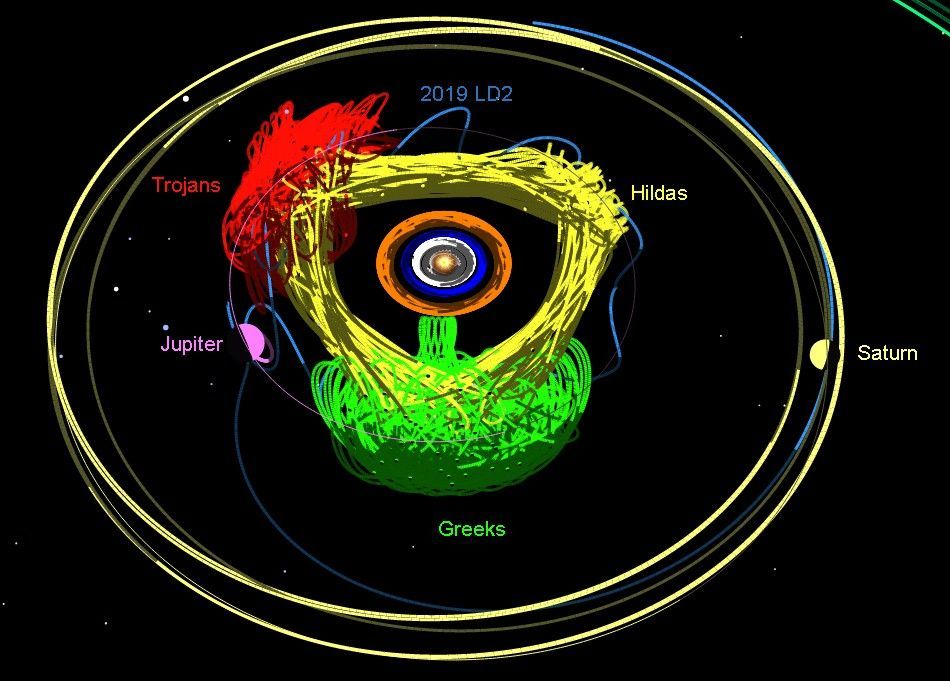
Jupiter has captured an icy comet from the outer solar system in a bizarre orbit that will bring it back to within 3 million kilometers of the giant planet in 2063. The only Sun-orbiting objects known to come closer were the fragments of Comet Shoemaker-Levy 9, which plunged into the Jovian cloud deck in July 1994.
A year ago, NASA’s asteroid-hunting ATLAS project in Hawai’i discovered 2019 LD2, and further observations showed it was a comet. New observations this spring confirmed it as a periodic comet and placed its orbit near Jupiter, leading Larry Denneau (University of Hawaii) to announce May 20th that P/2019 LD2 was the first comet among the Trojans. This family of several thousand asteroids shares Jupiter’s orbit but stays steady at about 60° ahead or behind of the planet. The discovery of a comet among Trojan asteroids was surprising because most of them are thought to have been captured in the solar system’s early years — any ices ought to have evaporated long ago.
However, when amateur astronomer Sam Deen used software on the Jet Propulsion Laboratory’s solar-system dynamics website to calculate the object’s orbit, he found P/2019 LD2 recently had a close encounter with Jupiter that left its orbit unstable. The model showed that the comet had likely been a Centaur, part of a family of outer solar system asteroids, with an orbit reaching out to Saturn. Then, on February 17, 2017, it passed about 14 million kilometers from Jupiter, an encounter that sent the comet on a wild ride and inserted it into an odd Jupiter-like orbit.


















